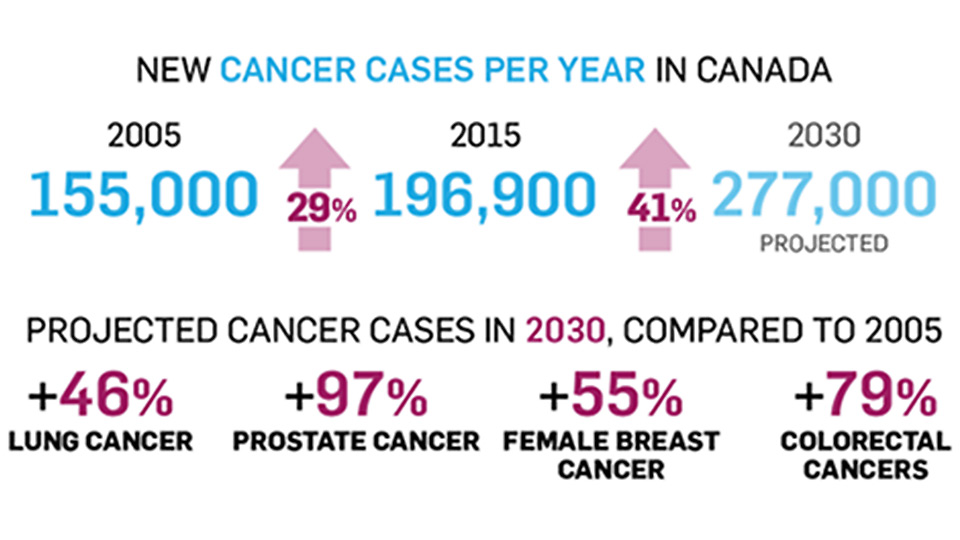Source: Thailand Medical News Nov 18, 2019 5 years, 5 months, 1 week, 1 day, 3 hours, 7 minutes ago
According to a new study on
cancer trends in
Canada from 1971 to 2015 published in
CMAJ (Canadian Medical Association),the overall rate of new cancer cases is decreasing in men but increasing in women younger than 80 years, and obesity-related
cancers are increasing in young people, according to a study on
cancer trends.

Dr. Darren Brenner, Cumming School of Medicine, University of Calgary, one of the coauthors told
Thailand Medical News, "The most striking results from these analyses relate to increasing incidence trends among younger adults for breast, colorectal, pancreatic, endometrial and kidney
cancers. Obesity is a risk factor for these cancer sites, and the rising incidence runs parallel to the growing prevalence of obesity in recent decades."
The new study, which included almost 5.2 million cancer cases diagnosed in
Canada between 1971 and 2015, looked at cancer trends by age and birth cohort (patients grouped by year/decade of birth).
Cancer incidence ie the rate of new cases is well documented in
Canada, but less is known about trends by age groups.
The authors said,"The trend among younger adults is of greater concern because they are ineligible for most
cancer screening programs”
Major findings of the study are:
-There has been an overall increase in
cancers not normally occurring at younger ages, particularly breast and colorectal
cancer.
-The highest increase in
cancer incidence is for women aged 30-39 years.
-
Cancer incidence has decreased in women aged 80-89 years.
-The most recent trends show statistically significant decreases in the incidence of cervical, lung, bladder and prostate
cancer, across most age categories.
-The overall recent decrease in
cancer incidence is due to declines in
cancer in people older than 50 years.
The overall reductions in
cancer incidence across age groups for several
cancer types are most likely the result of primary and secondary prevention activities, including smoking cessation programs, which have decreased lung
cancer, and sun safety behaviours, which have led to lower rates of melanoma in women younger than 40 and in men younger than 50 years.
Endoscopy and fecal-based screening programs for colorectal
cancer and screening for cervical
cancer have contributed to declining rates in these
cancers.
But a rise in the use of prostate-specific antigen (PSA) testing resulted in sharp increases in prostate
cancer diagnoses between 1990 and 2007, and thyroid
cancer has also been over-diagnosed.
Also ,age-specific
can
cer rates over time help identify the impact of changes in practice such as screening programs, better diagnosis and changing risk factors. Further efforts to reduce obesity, promote additional
cancer prevention programs and further research into risk factors that may be causing
cancer in younger age groups are essential.
Reference: "Age-standardized cancer-incidence trends in Canada, 1971-2015" is published November 18, 2019, CMAJ (2019). https://www.cmaj.ca/lookup/doi/10.1503/cmaj.190355 